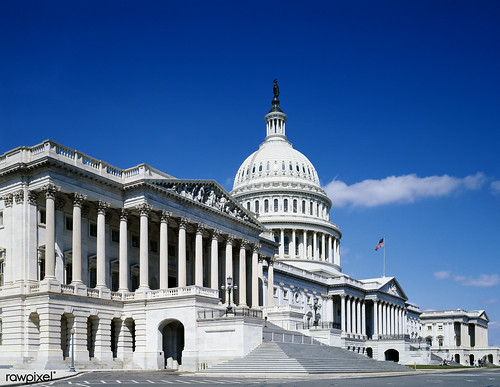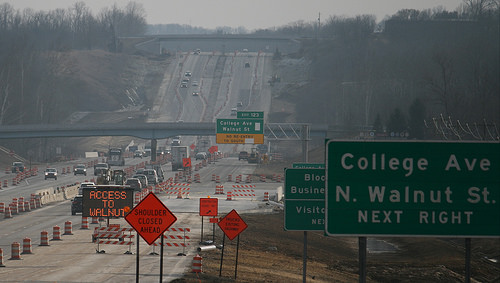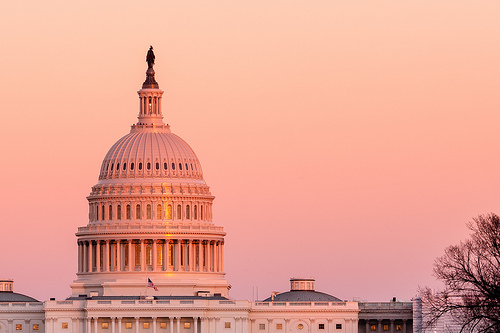The Resource Conservation and Recovery Act (RCRA) assigns the US Environmental Protection Agency (EPA) and state hazardous waste agencies regulate “hazardous wastes,” including categories defined as “universal wastes” that are subject to reduced management requirements. EPA defines five categories, but also allows states to define additional categories (I wrote about this here). California’s Department of Toxic Substances Control (DTSC) has just proposed to add a new category of state-regulated universal waste covering “photovoltaic [PV] modules” to its regulations under the state’s Hazardous Waste Control Law (HWCL). The remainder of today’s blog summarizes these proposed universal waste PV requirements.
Read MoreAudit, Compliance and Risk Blog
California Proposes Universal Wastes Rules For Photovoltaics
Posted by Jon Elliott on Tue, Jun 11, 2019
Tags: California Legislation, Environmental risks, Environmental, EHS, EPA, Hazcom, RCRA
The Resource Conservation and Recovery Act (RCRA) assigns the US Environmental Protection Agency (EPA) to define and then regulate “hazardous wastes.” EPA applies its considerable discretion to separate hazardous wastes into categories subject to distinct waste management requirements. One basis for these categorizations is relative risk – the more hazardous the waste the greater the controls required, and the smaller the threshold quantities necessary to trigger regulation. Beginning in 1995, EPA has defined a limited set of very common lower-risk wastes as “universal wastes,” and made them subject to special rules intended to encourage recycling (40 CFR part 273). The rest of this note summarizes universal waste requirements.
Read MoreTags: Health & Safety, Environmental risks, Environmental, EPA, Hazcom, RCRA
EPA Requiring Notice and Review Before Lapsed Uses of Asbestos Can Be Reintroduced
Posted by Jon Elliott on Tue, May 07, 2019
The Environmental Protection Agency (EPA) is continuing its renewed reviews of asbestos products, and has just issued a requirement that “discontinued” uses receive new review and approval before they can re-enter commerce in the United States. Formally, EPA has issued a Significant New Use Rule (SNUR) covering these products (I wrote about the SNUR proposal here).
Read MoreTags: Health & Safety, Environmental risks, Environmental, EPA
Trump Administration Further Tightens Controls Over Agency Rulemaking
Posted by Jon Elliott on Tue, Apr 30, 2019
The Trump Administration has taken another step to centralize its control over federal agencies’ rulemakings and policy-setting. Rulemaking has always reflected tensions between the politicians who adopt laws, and the agency staff who interpret and apply them through formal rules and information guidance and procedures. Depending how entrenched career staff are in their agencies, there may also be tensions between the elected executive (President, governor, etc.) and his or her agencies, even after his or her appointees are nominally in charge.
Read MoreTags: Business & Legal, EHS, EPA
EPA’s New Chemical Review Priorities Should Encourage User Reviews Too
Posted by Jon Elliott on Tue, Apr 09, 2019
The Environmental Protection Agency (EPA) has just proposed to assign chemical review priorities for 40 chemicals, as required by the 2016 Amendments to the Toxic Substances Control Act (TSCA; the “Frank R. Lautenberg Chemical Safety for the 21st Century Act”). As required by the 2016 Amendments, the proposal identifies 20 high priority chemicals for evaluation within three years, and 20 low priority chemicals that do not require further evaluation. Once each evaluation is completed, EPA is to determine appropriate regulatory requirements. Organizations that manufacture, process or use any of these chemicals should follow the rulemaking and evaluation process(es), and consider possible substitutes in order to reduce hazards and possible regulatory changes after completion of each relevant evaluation.
Read MoreTags: Environmental risks, Environmental, EPA, Hazcom, tsca
The Environmental Protection Agency (EPA) has completed a long review, and reaffirmed the primary National Ambient Air Quality Standard (NAAQS) for oxides of sulfur (SOX; usually measured as sulfur dioxide (SO2)). This is the first review of the primary SOX NAAQs since 2010 (primary standard – EPA did not review the secondary SOX NAAQS established in 2012).
Read MoreTags: Environmental risks, Environmental, EPA, Greenhouse Gas, ghg, SOX, CAA
EPA Massively Updates National Chemical TSCA Inventory Database
Posted by Jon Elliott on Tue, Mar 26, 2019
The Environmental Protection Agency (EPA) has just made massive updates to the largest national data base of chemical information, the TSCA Inventory. Since 1976, the Toxic Substances Control Act (TSCA) has provided EPA with broad authorities to collect information about chemical substances in commerce in the U.S., including new chemicals that manufacturers and importers hope to bring into commerce. Information about all these substances is collected in the TSCA Inventory.
Read MoreTags: Environmental risks, Environmental, EPA, Hazcom, tsca
On March 11, the Trump Administration issued its budget proposal for federal Fiscal Year (FY) 2020 (October 1, 2019 through September 30, 2020), entitled “A Budget for a Better America: Promises Kept. Taxpayers First.” The proposal includes a 31% cut in the Environmental Protection Agency (EPA) budget, from $8.28 billion in FY 2019 (under a Continuing Budget Resolutions rather than a fully-new federal budget), to $6.07 billion for FY 2020, with corresponding personnel cuts from 14,376 full-time-equivalent employees (FTE) to 12,415. (these are numbers for EPA in the government-wide budget from the Office of Management and Budget (OMBB) summary of the entire budget proposal, and EPA provides additional details on its own website).
Read MoreTags: Business & Legal, Environmental risks, Environmental, EPA
After a long rulemaking, the US Environmental Protection Agency (EPA) has just promulgated rules defining certain waste pharmaceuticals as “hazardous wastes” under the Resource Conservation and Recovery Act (RCRA), and establishing standards for their management by selected healthcare and “reverse distribution” waste management facilities. These regulations replace general RCRA generator and treatment requirements otherwise applicable to hazardous wastes.
Read MoreTags: Health & Safety, EPA, Hazcom, RCRA, pharmaceuticals
Another Round of EPA and Corps of Engineers Proposals to Redefine “Waters of the United States”
Posted by Jon Elliott on Tue, Feb 26, 2019
On December 11, 2018 the Environmental Protection Agency (EPA) and the U.S. Army Corps of Engineers (Corps) jointly proposed to revise their regulatory definitions of “waters of the United States”, applying authority under the Clean Water Act (CWA). CWA does not define this term clearly, so after decades of rulemakings and litigation, it remains in dispute. Generally, Democratic presidents and the judges they appoint tend to support geographically and semantically broad applications, while with Republican presidents and the judges they appoint tend to take narrower views. The latest proposal would narrow the definition, reversing Obama-era rules adopted in June 2015, and presently in effect in 22 states based on the present status of ongoing judicial appeals (I summarized the 2015 rules, and the litigation leading up to them here and the Trump-era EPA’s 2017 proposal to roll back the 2015 revisions here). The agencies characterize this narrowing as an increase in certainty for stakeholders, accomplished by eliminating some of the site-specific discretion that the 2015 rules provided to permit writers. Because of the government shutdown, this latest proposal was not published in the Federal Register until February 14, 2019.
Read MoreTags: Environmental risks, Environmental, EPA, effluent, clean water










